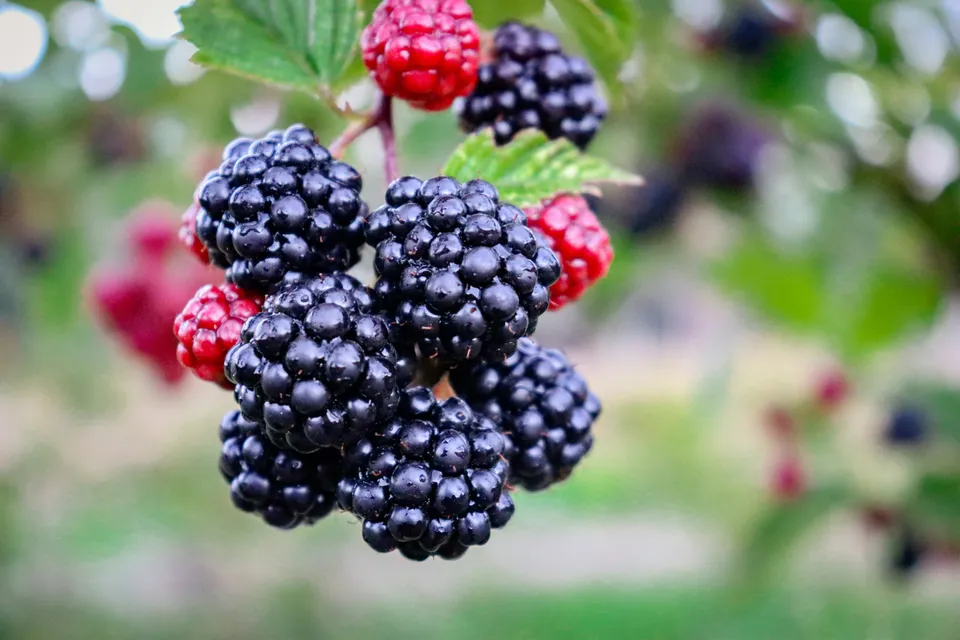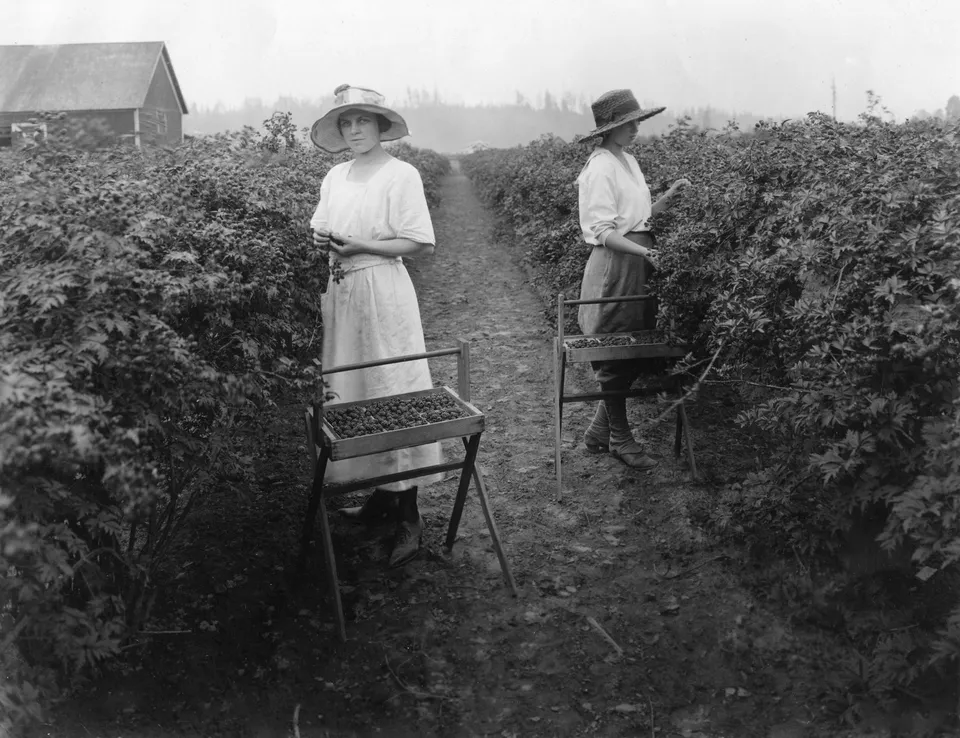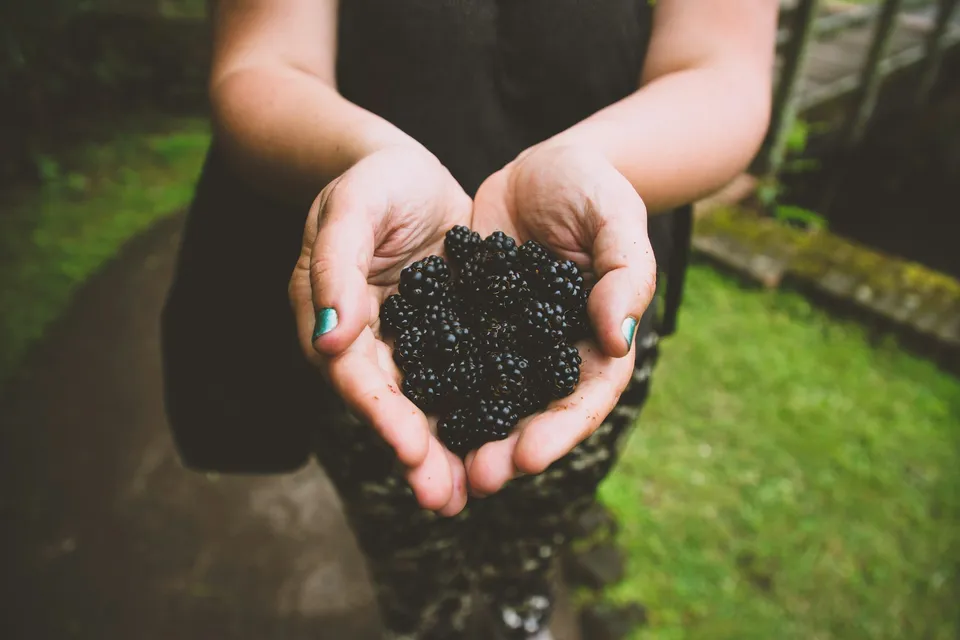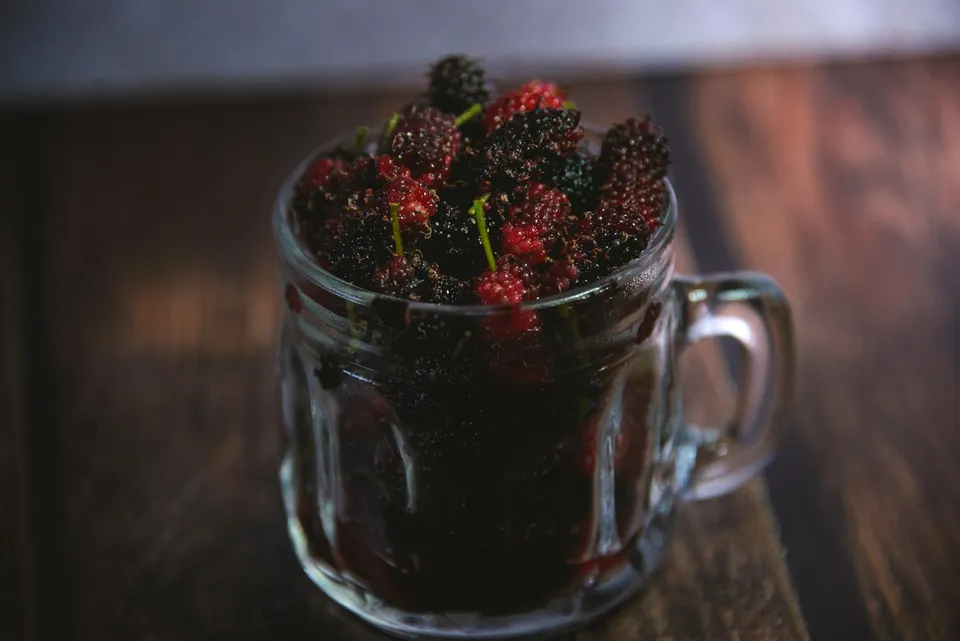
How to Grow Blackberries - From Planting Cuttings to Abundant Harvests
Blackberries are a delightful and nutrient-rich fruit, perfect enjoyed fresh, blended into juices, simmered into jams, or featured in desserts. Growing them is relatively straightforward, and the plants thrive both in garden beds and containers. Here’s everything you need to know to plant blackberries and ensure a bountiful harvest!
Where's the Best Place to Plant Blackberries?
Blackberries crave sunshine! To develop well and produce abundant fruit, your blackberry patch needs a location that receives at least 6-8 hours of direct sunlight daily. They can be successfully grown in dedicated garden plots, vegetable patches, or even in large containers on sunny patios and balconies. Good air circulation is also key to preventing common fungal diseases.
If planting in containers, choose a pot that is at least 15-20 inches (approx. 40-50 cm) deep and wide. This provides ample space for robust root development. Ensure the container has excellent drainage holes.
What's the Ideal Soil for Blackberries?
Blackberries perform best in well-draining soil rich in organic matter with a slightly acidic pH, ideally between 5.5 and 6.5. A great soil mix combines garden loam or topsoil with compost, aged manure, or peat moss to improve structure and fertility.
Avoid heavy clay or compacted soils. Poor drainage can lead to root rot, a common issue for blackberry bushes. If your native soil isn't ideal, consider planting in raised beds where you can control the soil mix.

How to Plant Blackberries: Young Plants, Cuttings, or Seeds?
The quickest and most common method is planting young blackberry plants (often called "canes" or purchased as small potted plants), but propagation from cuttings or seeds is also possible.
-
Planting Young Plants (Most Common):
- Purchase healthy, disease-free plants from a reputable nursery. These might be bare-root canes (typically planted in late winter/early spring while dormant) or container-grown plants.
- Dig a hole slightly wider and as deep as the root ball or root system. Prepare the soil in a wider area around the hole as well.
- Position the plant so the crown (where roots meet the stem) is at soil level. For bare-root plants, spread the roots out.
- Backfill the hole with the amended soil, gently firming it around the roots to remove air pockets. Avoid heavy compaction.
- Water thoroughly immediately after planting and keep the soil consistently moist (but not waterlogged) for the first few weeks.
-
Propagating from Cuttings (Multiplying Your Stock):
- This is a great way to get more plants from an existing, healthy blackberry bush.
- Tip Layering: In late summer, bend a flexible young cane (primocane) down to the ground. Bury a section of the tip a few inches deep, leaving the very end exposed. It will root over winter; you can sever it from the parent plant and transplant it next spring.
- Stem Cuttings: In late summer or fall, take 4-6 inch cuttings from healthy current-year canes. Remove lower leaves, dip the bottom end in rooting hormone (optional but helpful), and plant in pots with a moist rooting medium (like perlite/peat mix). Keep humid and warm until rooted.
-
Planting from Seeds:
- Extract seeds from fully ripe blackberries and wash them thoroughly.
- Allow seeds to air dry for a few days.
- Plant seeds shallowly (about 1/4 inch deep) in a container filled with seed-starting mix rich in organic matter.
- Keep the soil consistently moist and be patient; germination can take 30 to 60 days, sometimes longer, and resulting plants may not have the same fruit quality as the parent. This method is less common for home gardeners seeking reliable fruit production.
Proper Watering Techniques for Blackberry Bushes
Blackberries prefer consistently moist soil, but absolutely hate "wet feet." Water deeply 2-3 times per week during the growing season, adjusting based on temperature, rainfall, and soil type. Sandy soils dry out faster than loam soils.
- During hot, dry spells, you may need to water more frequently.
- In cooler weather or rainy periods, reduce watering to prevent root rot.
- Water at the base of the plant (using drip irrigation or a soaker hose is ideal) to keep foliage dry, minimizing disease risk.
- Applying a layer of organic mulch (like wood chips or straw) helps conserve soil moisture and suppress weeds.

Fertilizing Your Blackberries for Optimal Growth
Feed your blackberry plants to encourage vigorous growth and abundant fruit:
- At Planting: Incorporate well-rotted manure or compost into the soil before planting.
- Early Growth: In spring, as new growth appears, apply a balanced fertilizer (e.g., 10-10-10) or one slightly higher in nitrogen (N) to promote healthy leaf and cane development. Organic options like compost tea or blood meal can also be used.
- Fruiting Stage: Once flowering begins, switch to a fertilizer with higher levels of phosphorus (P) and potassium (K) to support fruit production and quality.
- Maintenance: Depending on your soil fertility, light applications of balanced fertilizer or compost every couple of months during the growing season can be beneficial. Always follow package instructions for application rates.
Pruning Blackberry Canes: Tips for Health and Yield
Pruning is crucial for keeping blackberry bushes productive, manageable, and healthy. The best time is usually during the dormant season (late winter/early spring). Understanding blackberry growth habits is key:
-
Primocanes: First-year canes. They typically grow vegetatively (leaves and stems).
-
Floricanes: Second-year canes. These canes produce flowers and fruit, then naturally die back after fruiting.
-
Annual Pruning Steps:
- Remove Old Floricanes: After harvest (late summer) or during winter dormancy, cut all canes that produced fruit down to the ground. They won't fruit again.
- Thin Primocanes: Select 4-6 of the strongest, healthiest primocanes per plant (or per foot of row for some varieties) and remove the rest at ground level. This improves air circulation and focuses the plant's energy.
- Tip Pruning (Optional but Recommended): During the growing season, when primocanes reach about 3-4 feet tall, snip off the top few inches. This encourages lateral branching, leading to more fruit the following year.
- Remove Damaged Canes: Cut out any dead, diseased, or broken canes anytime you see them.
- Container Pruning: Keep container-grown plants well-pruned to maintain a manageable size.
- Support: Many blackberry varieties, especially trailing types, benefit from trellising or support structures to keep canes off the ground and simplify harvesting.
Protecting Your Blackberries from Pests and Diseases
Common issues include aphids, spider mites, Japanese beetles, and caterpillars. Fungal diseases like anthracnose or rust can also occur.
-
Pest Control:
- Regularly inspect plants for early signs of infestation.
- Use insecticidal soap or horticultural oil sprays for soft-bodied insects like aphids and mites.
- Neem oil-based products can act as a broad-spectrum insecticide and fungicide.
- Hand-pick larger pests like Japanese beetles or caterpillars (drop them into soapy water).
- Encourage beneficial insects like ladybugs, which prey on aphids.
- Protect ripening fruit from birds using netting.
-
Disease Prevention:
- Choose disease-resistant varieties when possible.
- Ensure good air circulation through proper spacing and pruning.
- Water at the soil level, avoiding wetting the leaves, especially in the evening.
- Remove and destroy any diseased plant parts promptly.
- Practice good garden sanitation, cleaning up fallen leaves and debris.

Harvesting and Storing Your Blackberries
Depending on the variety and planting method, you can expect your first harvest 1-2 years after planting young canes. Blackberries are ready when they transition from red to a deep, glossy black and detach easily from the stem with a gentle tug. They don't ripen further after picking, so harvest only fully ripe berries.
- Storage:
- Handle berries gently to avoid bruising.
- Refrigerate unwashed berries immediately in a shallow container. They typically last 3-5 days. Wash just before eating.
- For longer storage, freeze blackberries: wash, gently pat dry, spread in a single layer on a baking sheet, and freeze until solid. Then transfer to freezer bags or containers. They keep well for several months.
- Preserve your bounty by making jams, jellies, syrups, or pies.
Blackberry Growing FAQs
-
Can blackberries be grown in pots?
- Absolutely! Use a large container (at least 15-20 inches deep/wide) with good drainage, place it in full sun, and choose a more compact or thornless variety if possible.
-
How long until a blackberry bush produces fruit?
- When planted from young nursery canes, expect fruit production to begin within 1 to 2 years. Seed-grown plants will take longer.
-
Do blackberries need full sun?
- Yes! They require at least 6-8 hours of direct sunlight daily for the best growth and fruit yield.
-
How can I prevent pests on my blackberry bushes?
- Practice good garden hygiene, use natural deterrents like neem oil or insecticidal soap, inspect plants regularly, and encourage beneficial insects. Netting can protect fruit from birds.
-
When is the best time to plant blackberries?
- Early spring (after the last frost) is ideal for planting container-grown or bare-root blackberries. Fall planting is also possible in milder climates.